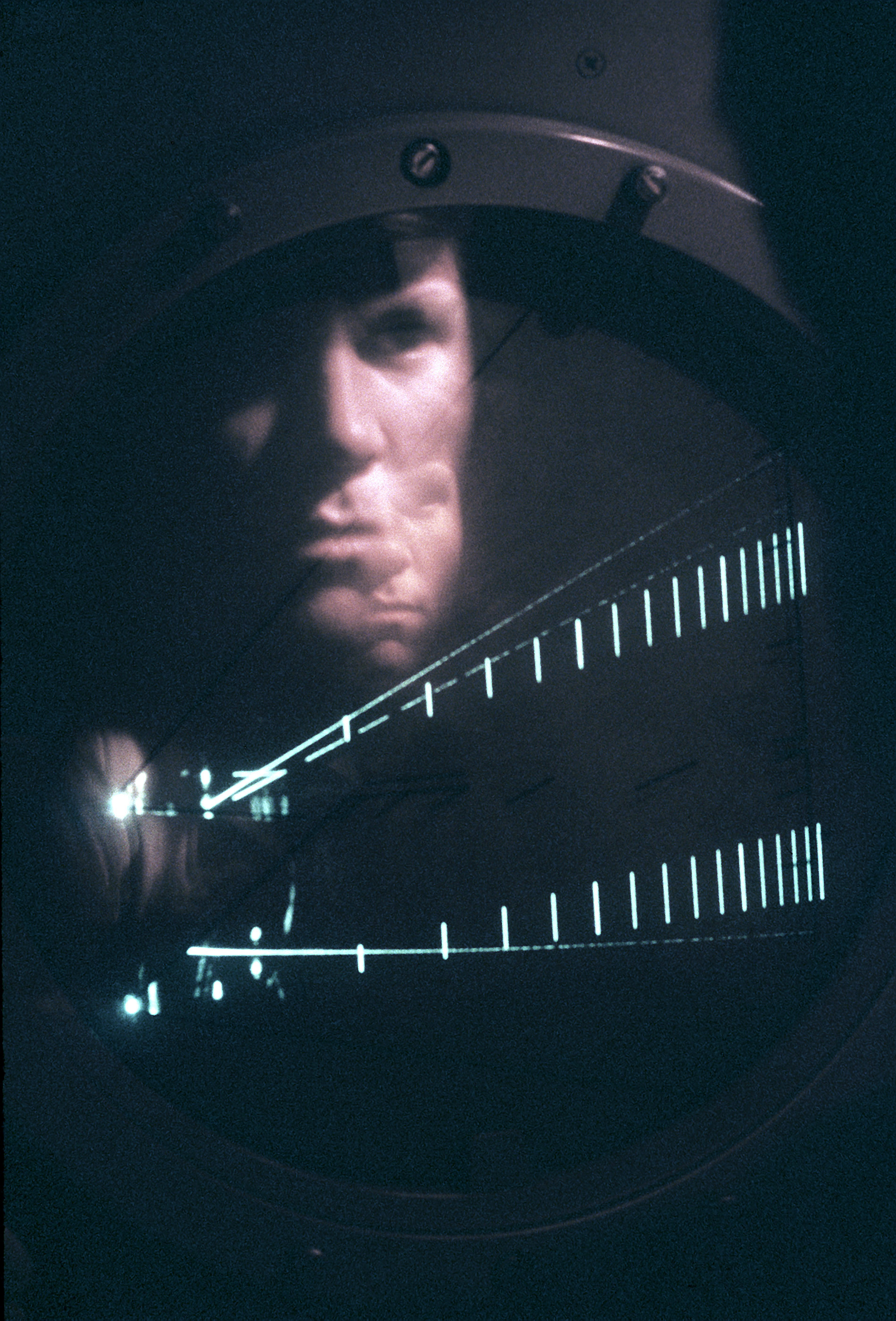The art of the PAR is the application of the science of making small, precise changes. The first airplane I ever flew a PAR with was the T-37B, complete with the world's simplest attitude indicator. The art of flying the "Tweet" in instrument conditions was instilling precision into instruments that were very imprecise.
— James Albright

Updated:
2013-11-27
We would fly the PAR by parking the little white dot on top of the white line. When instructed to "begin descent" we pushed the stick forward and nudged the throttles backwards until half the white dot could be seen below the white line. Changes to pitch were made in increments even smaller, in "hair widths." We used PAR approaches at first, because it was often the only thing we had at some military bases. (See You Can't Go Unless You've Been.) By the time I got to my last military flying assignment, we flew them just to keep the controllers current.

1
General description
During a Precision Approach Radar (PAR) a controller provides highly accurate navigational guidance in azimuth and elevation to a pilot. Pilots are given headings to direct them to and keep their aircraft aligned with the extended centerline of the landing runway. They are told to anticipate glide path interception approximately 10 to 30 seconds before it occurs and when to start descent. If the aircraft is observed to deviate above or below the glide path, the pilot is given the relative amount of deviation by use of terms “slightly” or “well” and is expected to adjust the aircraft's rate of descent/ascent to return to the glide path Trend information is also issued with respect to the elevation of the aircraft and may be modified by the terms “rapidly” and “slowly”; e.g., “well above glide path, coming down rapidly.” Range from touchdown is given at least once each mile. If an aircraft is observed by the controller to proceed outside of specified safety zone limits in azimuth and/or elevation and continue to operate outside these prescribed limits, the pilot will be directed to execute a missed approach or to fly a specified course unless the pilot has the runway environment (runway, approach lights, etc.) in sight. Navigational guidance in azimuth and elevation is provided the pilot until the aircraft reaches the published Decision Height (DH). Advisory course and glide path information is furnished by the controller until the aircraft passes over the landing threshold, at which point the pilot is advised of any deviation from the runway centerline. Radar service is automatically terminated upon completion of the approach.
Source: Aeronautical Information Manual, §5-4-11
2
Requirements, advantages, disadvantages, limitations
Equipment Requirements
The radar approach is predicated entirely upon voice instructions from the radar controller.
Regulatory Requirements
None.
Advantages
Requires nothing more than a radio.
Disadvantages
The PAR requires a high degree of training from the radar controller and pilot. Very few facilities in the world still offer PAR approaches.
Limitations
None.
3
Procedures
- Repeat all headings, altitudes (departing and assigned), and altimeter settings until the final controller advises "do not acknowledge further transmissions.
- The transition to final segment of the approach includes all maneuvering up to a point where the aircraft is inbound and approximately 8 nautical miles from touchdown. Turns and descents should be initiated immediately after instructed. Perform turns by establishing an angle of bank on the attitude indicator which will approximate a standard turn for the TAS flown but do not exceed 30° of bank.
- During the final approach, the controller will give elevation information as “slightly/well above” or “ slightly/well below” glide path, and course information as “slightly/well right” or “slightly/well left” of course. Extreme accuracy in maintaining and correcting headings and rate of descent is essential. The controller will assume the last assigned heading is being maintained and will base further corrections on this assumption. Range from touchdown is given at least once each mile. If your aircraft is observed by the controller to proceed outside of specified safety zone limits in azimuth and/or elevation and continue to operate outside these prescribed limits, you will be directed to execute a missed approach or to fly a specified course unless you have the runway environment in sight. You will be provided navigational guidance in azimuth and elevation to the DA/DH.
- Advisory course and glide path information will be furnished by the controller until your aircraft passes over the runway threshold, at which point you will be advised of any deviation from the runway centerline. Radar service is automatically terminated at the completion of the approach.
Source: AFM 51-37, ¶6-17
References
(Source material)
Aeronautical Information Manual
Air Force Manual (AFM) 51-37, Instrument Flying, 1 December 1976
